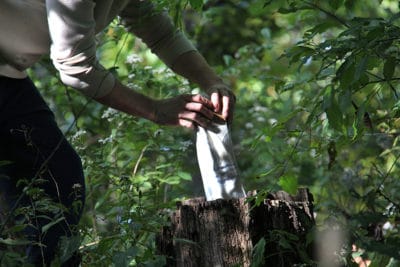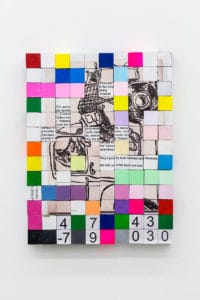When most people go to an art gallery or an art studio, it is with the intention of viewing and perhaps even purchasing the art. However, a New York artist has an entirely different concept for his art shows: selling art that has been geocached and providing clues and coordinates to the actual artwork. The project, called Freecaching, combines thriftiness, art, and and geocaching.
“Imagine if Geocaching’s use of GPS technology, concealment, and open space were applied to passive storage rather than active treasure hunting,” Brad Troemel. the artist behind the experiment, wrote in a press release. “Through Freecaching you could leave art physically protected and concealed in an uninhabited area outside a major center of arts commerce and provide buyers with the exact latitude and longitude of a purchase… Collectors could choose to pick their work up or just as comfortably leave it concealed and protected outdoors, knowing with confidence that no one but they and the artist have knowledge of where the work is located.
According to his website, the idea for Freecaching came after Troemel became tired of renting out both his studio and apartment to pay for each of them, and he began to wonder if there was a better way to store his artwork. That’s when he discovered Geocaching and the world of GPS, and although the article I read made it sound as if he had never geocached before, he loved the concept and decided to try his own version of it.
Freecaching, as the experiment has been dubbed, involves wrapping 15 pieces of artwork in industrial plastic and hiding them in logs, crannies, and crevices in Central Park, using geocaching methods to hide the containers. Troemel claims that the packages are not only impervious to the weather and the elements, but also to accidental finding by whatever the freecaching term for ‘muggles’ would be. Thus, with the artwork safely stashed away, Troemel then creates a display with clues to the location and sells the actual coordinates so that owners can find the artwork on their own (or be guided by the artist if they choose).
Although I’m not entirely sure how sound the concept is (after all, geocachers have been doing this for far longer and there are still caches which are muggled on occasion) it is definitely an interesting idea and one of the more unique ways that the art world has used GPS. Mostly, when you think art and GPS, you think of drawing images with GPS or even GPS apps, so this definitely takes the cake as far as original ideas.
What do you think? Awesome idea or completely misguided? Leave me a note in the comments below!


